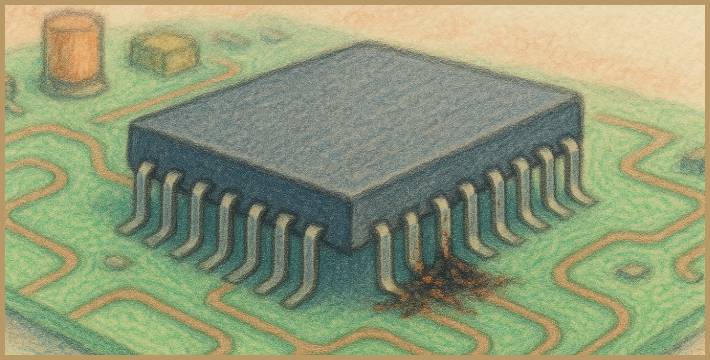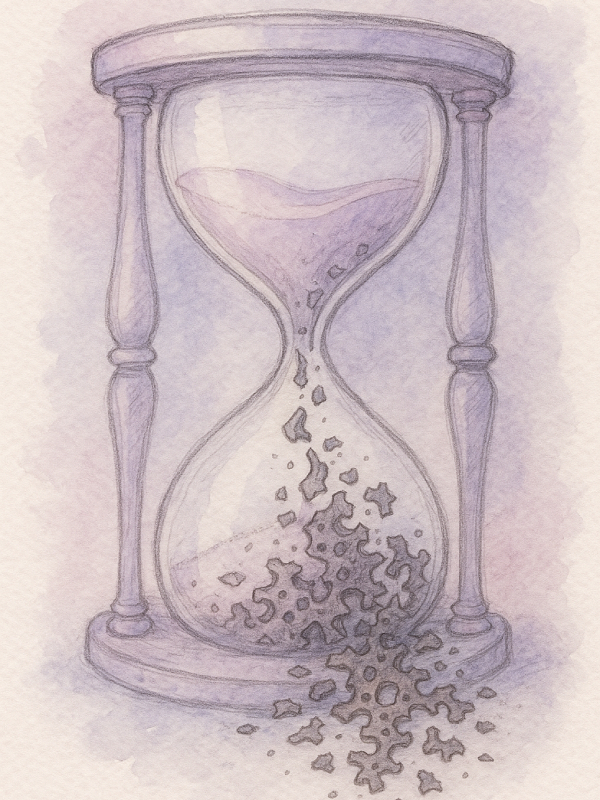
You can't threaten your way to effective engineering
Think of an engineer spotting a design flaw during code review but choosing silence to avoid pushback from a stressed manager. Or a team member withholding concerns about integration risks in a sprint planning, fearing it might label them as negative. Or an engineer who knowingly cuts corners to hit an estimate, instead of raising the issue and proposing tradeoffs. Such behaviors point to how fear shapes decisions.
In my last post we covered Conway’s Law, describing how organizational structure influences system design. Yet the behaviors within that structure determine the outcome.
Engineering depends on steady judgment. That means surfacing ambiguity, weighing tradeoffs, challenging plans, offering feedback that redirects work before it derails. Fear blocks it all. Leaders may aim to reinforce accountability and spark urgency, but fear often strips away the very conditions that allow effective engineering to happen.
Fear looks like urgency. It functions like erosion.
Fear rarely arrives announced. It slips in through compressed timelines that ignore complexity, praise of heroics that came at the expense of sleep and sustainability, or offhand remarks about AI replacing engineers as a pressure tactic.
Fear often hides behind urgency, and in the short term, it works. Delivery happens and metrics look good, but things start to decay underneath. Teams shift from solving problems to checking boxes, and instead of surfacing issues they look for cover.
Fear breeds compliance, but engineering isn’t compliance work.

What effective engineering actually requires
Engineering is a decision-making discipline shaped by ambiguity. Should we trade long-term maintainability for short-term delivery? Should we tolerate gaps in the spec or push for clarity? What level of testing matches the risk? These aren’t mechanical tasks and call for judgment under uncertainty.
That judgment directly depends on psychological safety, defined in Amy Edmondson’s The Fearless Organization (Amazon affiliate link) as the shared belief that it’s safe to speak up. It’s not a personal trait, but rather a team norm that enables people to challenge plans, admit risks and flag uncertainty before it becomes debt.
Kim Scott’s Radical Candor (Amazon affiliate link) describes this dynamic well as care personally, challenge directly. In practice, this means raising risks because you want the work to succeed, instead of staying silent to avoid friction.
Strong teams don’t avoid hard conversations. Instead, they bring concerns forward early, challenge each other with care and share context that improves the outcome. The point is to be invested in doing the work well rather than difficult.
Without psychological safety, engineering becomes theater. Risks stay buried, questions go unasked, and you may ship something that works, but only on the surface.

Judgment doesn’t survive fear
Under fear, priorities shift. The work stops being about building the right thing well and becomes about avoiding (or even worse, redirecting) blame. Teams make choices that are easy to defend rather than correct, ideas stay inside drafts, reviews become rubber-stamps, doubts stay hidden and feedback dries up.
This is well documented in Organizational Behavior. Fear narrows focus, lowers creativity, weakens feedback loops and suppresses learning. People seek safety in silence.
Sometimes the stress is self-imposed, shaped by past experiences, role ambiguity, or toxic patterns inherited from previous teams. Leaders need to spot this too. Not all fear comes from above. But all fear interferes with engineering judgment.
What fear-based leadership looks like (and why it fails)
Fear-based leadership is often mistaken for decisiveness. Teams stop pushing back and eadlines are met with nods instead of nuance. In such a toxic environment overtime gets rewarded while burnout is reframed as grit.
But fear is dysfunction, not firmness. When leaders create or tolerate fear, they lose access to the most valuable part of the team, which is its ability to spot problems early, challenge assumptions, and propose better ways forward.
As the environment worsens, the effects compound. Shallow fixes ship, quality erodes, incidents repeat, and productivity grinds to a halt. Strong engineers move on and ownership weakens further. More and more decisions get escalated, not because they’re complex, but because no one feels safe to own them.
What good leadership looks like instead
Effective leaders create space for thinking, dissent, deliberate tradeoffs and self-improvement. They ask more than they tell and they admit when they’re unsure, while making it easier to raise risks than to hide them.
Some would be quick to call this soft leadership. I call it high-leverage leadership, as it builds teams that adapt, grow and improve under pressure. One model that supports this is called Servant Leadership, where the leader’s role is to serve the team by removing friction and enabling judgment.
This echoes DeMarco and Lister’s Peopleware (Amazon affiliate link) which states: The manager’s function is not to make people work, but to make it possible for people to work. L. David Marquet’s Turn the Ship Around (Amazon affiliate link) describes a version of this through the leader-leader model, which replaces command-and-control with shared ownership and distributed decision-making.
Good leaders don’t reward firefighting, but rather prevent fires from starting. They build teams that recognize risks early and act with clarity, not fear. And when mistakes happen, they make it safe to own them, learn from them, and improve the system.

Building better environments
Fear appears efficient yet incurs hidden expenses. It surfaces in several ways, from disruptions to overlooked risks, disengagement and lost expertise. Psychological safety accumulates benefits. Teams that trust decide wisely, while candid discussions create sustainable designs.
This ties back directly to Conway’s Law. Structural communication boundaries shape systems, but the psychological climate within those boundaries determines resilience. Fear-based environments fracture information flow and breed brittle, defensive architectures.
Teams working in high-trust, psychological safe environments cross communication boundaries fluidly, leading to systems that are maintainable and adaptable, aligned with real-world needs.
In the next post, we’ll explore how AI tools augment engineering judgment by handling routine tasks. This augmentation frees engineers to focus on complex decisions requiring deep human insight, further emphasizing the role of psychological safety in enabling teams to thrive around these new capabilities.
Until next time, Tasos.
Become a DrinkBird Insider
Never miss a post! Get the latest articles on tech and leadership delivered to your inbox. Sign Me Up Sent sparingly. Your privacy is a priority. Opt-out anytime.
Recommended Books
Full disclosure: the following are Amazon affiliate links. Using these links to buy books won't cost you more, but it will help me purchase more books. Thank you for your support!







